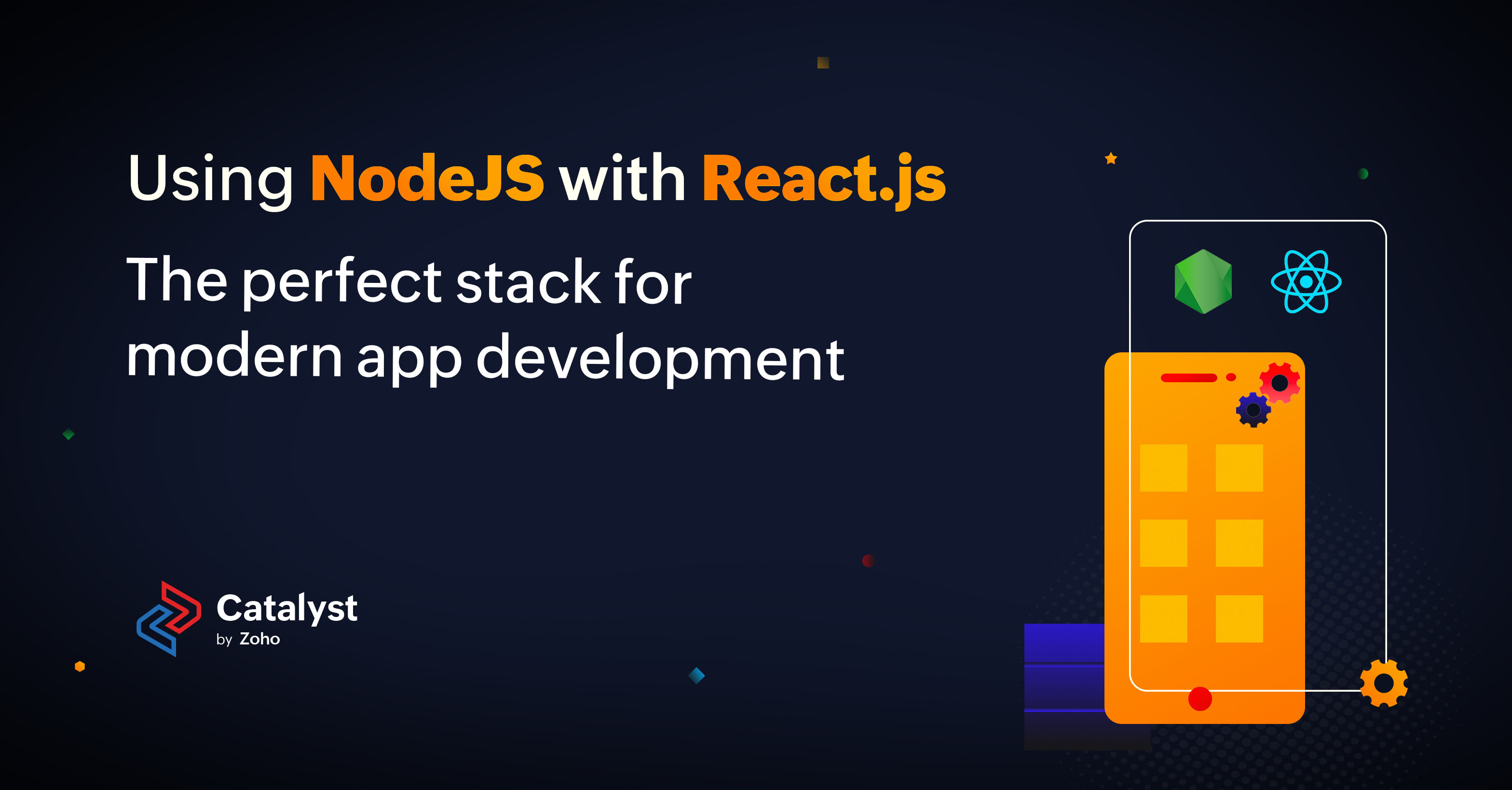- HOME
- Using NodeJS with React.js | The perfect stack for modern app development
Using NodeJS with React.js | The perfect stack for modern app development
- Last Updated : October 10, 2023
- 3.3K Views
- 3 Min Read

This is a guest post by Harikrishna Kundariya, a marketer, developer, IoT, ChatBot & Blockchain savvy, designer, co-founder, Director of eSparkBiz Technologies.
Developing a full-stack web project from scratch can be challenging. Details like the structure of code, or which frameworks will be best suited for its frontend and backend are some important concerns for businesses.
The solution is two fold:
— Create a frontend that engages users and is seamless to navigate.
— Create a stable backend that allows your program to run properly.
Node.js and ReactJS are two of the most popular technologies for application development today. ReactJS is the most popular frontend JavaScript library, while Node.js is well known for its backend, they make a great combination for web projects.
Why is the combination of these two technologies a perfect blend for creating seamless web applications? Let’s find out.
What is NodeJS?
Node.js is a fast, scalable platform for building network applications based on Chrome's JavaScript runtime.
This lightweight and efficient I/O model makes Node.js ideal for distributed, data-intensive, real-time applications that require non-blocking input and output. It can be used from multiple platforms and helps minimize development time.
What is React.js?
The JavaScript library ReactJS is used to build user interfaces. You can use it to create reusable components that make code easier to read and maintain. A ReactJS component automatically updates when a user interacts with it and has seamless responses and functions across different devices. This makes your app more responsive and fast. Therefore, tech-focused companies highly prefer ReactJS for enterprise app development.
It is a well-known, extensively used web framework, that enables developers to create extremely compelling and scalable online apps without needing to know complex frameworks or scripting languages.
How are NodeJS and React.js used together?
ReactJS with Node.js offers features for building complex online apps swiftly, while ensuring a high level of responsiveness across a variety of platforms. Thus, Node.js and ReactJS are excellent choices for people looking to create modern, dynamic web applications that can manage large volumes of data.
The simplification of UI designs in ReactJS enables the building of seamless components, while Node.js' strong back-end library provides for efficient management of large data.
Benefits of using NodeJS and React.js together
1. Server overload: Using ReactJS with Node.js is advantageous if you want to create a versatile website and need a server that handles the high load. Multiple requests can be managed more effectively by combining Node.js and ReactJS.
2. Easy to manage: Creating a web app using ReactJS and Node saves you money and time, while also providing higher returns on investment.
3. Same language: By using Node with ReactJS, developers can switch between languages seamlessly. This seamless switching saves time and resources and helps create a better app.
4. Scalability: The Node + React combo enables developers to construct interactive, extensive web apps. If you are working on big projects, the scalability of the service will not be an issue. It proves to be extremely responsive across all scales and is easy to maintain.
5. MERN: MongoDB, Express, ReactJS, and Node.js comprise the MERN stack. There is no stronger combination than these frameworks for giving websites a distinct dimension.
Examples of NodeJS and React.js in use
— There are a number of different ways to use Node.js and ReactJS together, we will look at five scenarios where this can be implemented.
— The first example is a simple web page that uses Node.js to handle the request and ReactJS to render the page.
— The second example is a basic chat application that uses Node.js to handle the communication between the users and ReactJS to render the chat interface.
— The third example is a simple CRUD application that uses Node.js to handle the backend operations and ReactJS to render the user interface.
— The fourth example is a weather application that uses Node.js to get the weather data and ReactJS to render the user interface.
— The fifth example is a to-do list application that uses Node.js to store the to-do items and ReactJS to render the user interface.
Conclusion
Node.js is a great choice for building web servers because it is lightweight and efficient. ReactJS is a great choice for building user interfaces because it is fast and easy to use. Using ReactJS with Node.js together for web app development may help organizations utilize the strengths of each in a complementary manner and take their projects to the next level.